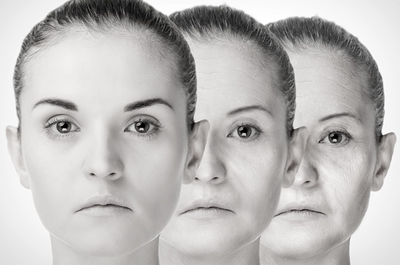
“Broken bones, broken lives”. With fragility fractures affecting one in three women and one in five men aged 50 or above, nearly everyone has an acquaintance who has been affected by a fragility fracture. Yet how many of us stop to question the true cause of fragility fractures and simply assume them to be a ‘normal’ sign of aging rather than the result of weakened bone?
As Europe (EU) population ages, the incidence and contribution of fragility fractures to the overall healthcare spend continue to increase, resulting in an enormous psycho-social and economic burden; indeed, every year, 2.7 million fractures occur across the EU nations with an associated healthcare cost of €37 billion, predicted to increase by 23% by 2030 . In addition to the cost issue, the physical and emotional impact must not be overlooked. These aspects are linked to the concept of frailty, defined as an increased vulnerability due to long-term hospitalization for fracture treatment, impaired quality of life and disability in the 83% of fragility fracture-affected patients. Nowadays, an additional high-impact wakeup call rises from Covid-19 pandemic: it is hypothesized a direct link between the virus and the slowdown of bone remodeling processes . Aging is a concurring factor that triggers a negative spiral of fractures, that are expected to increase by approximately +25% in the next ten years . The impact of fragility fractures suffers from an imbalance due to an evident gender gap: the number of women exceeding a fracture threshold is six times higher than in men. This parameter, i.e., the fracture threshold, is defined as the 10 years probability of a major fracture equivalent to that of a woman with no other clinical risk factors, marking women as a risk category.
However, despite the evident health- and economic-related interests about bone fractures, their comprehension, and prevention are still limited to the macro-scale (corresponding to the whole bone: 50 cm-10 mm) level, where their occurrence is already critical. Firstly, common clinical imaging is often invaluable for evidencing early fracture signs, raising the motivation to combine the diagnosis with measures of bone quality, that cover geometrical and material features of the macro- and micro-architecture. Computed tomography (CT), and ultrasound can offer improved diagnostic capabilities, but have limited use in the clinic primarily due to cost and high radiation dose. Secondly, clinical examinations by a physician are often relied upon macro-scale imaging, but these diagnoses are subjective and can result in imprecise assessments.
Therefore, these contributing factors highlight the need and urgency to address now the fragility fracture crisis: early diagnosis is the keys for targeted and preventive therapeutic strategies. So, there is an imperative need to recognize fragility fractures as a public health priority, and to establish fracture prevention as an integral component of healthy aging. The lack in the effectiveness of the diagnostical tools, and deficiency in patient-specific solutions rise the urge to take care of those “broken bones, broken lives”.
In this context, ARCHIMEDES (frActuRe meCHanIcs Micro-scale bonE Damage mEchanismS) project comes into play, providing attractive, interdisciplinary and versatile strategies for multi-scale comprehension and detection of bone fractures. The over-arching aim of the current proposal is to provide a combined high-level experimental and numerical approach for the early-stage clinically applicable detection of bone fractures, shedding some light on bone micro-scale alterations due to pathologies. The exploitation of a novel quantitative fracture mechanics-based framework for the definition of a micro-risk fragility index, will open the doors to patient-specific preventive treatments, not achievable with the actual med care system. Synchrotron imaging combined with micro-mechanical testing will allow to implement damage models with an unprecedent resolution. The combined exploitation of artificial intelligence tools will permit to provide time and cost-efficient and accurate identification of micro-scale phenomena.
Such a transversal and challenging objective can be addressed only under the guidance of a multidisciplinary consortium; ARCHIMEDES network gathers excellence centers such as Politecnico di Milano in the field of mechanical engineering and computer science, University of Milan in the clinical sector and the Elettra synchrotron (sub-unit) as an advanced imaging center.
In detail, ARCHIMEDES PI, Prof. Laura Vergani, thanks to her decennial expertise in fracture mechanics and its application to biological materials, will bridge the gap between the research and the clinical practice. The Coordinator Team includes Federica Buccino, that will support the early identification of mechanical weakening in bones.
